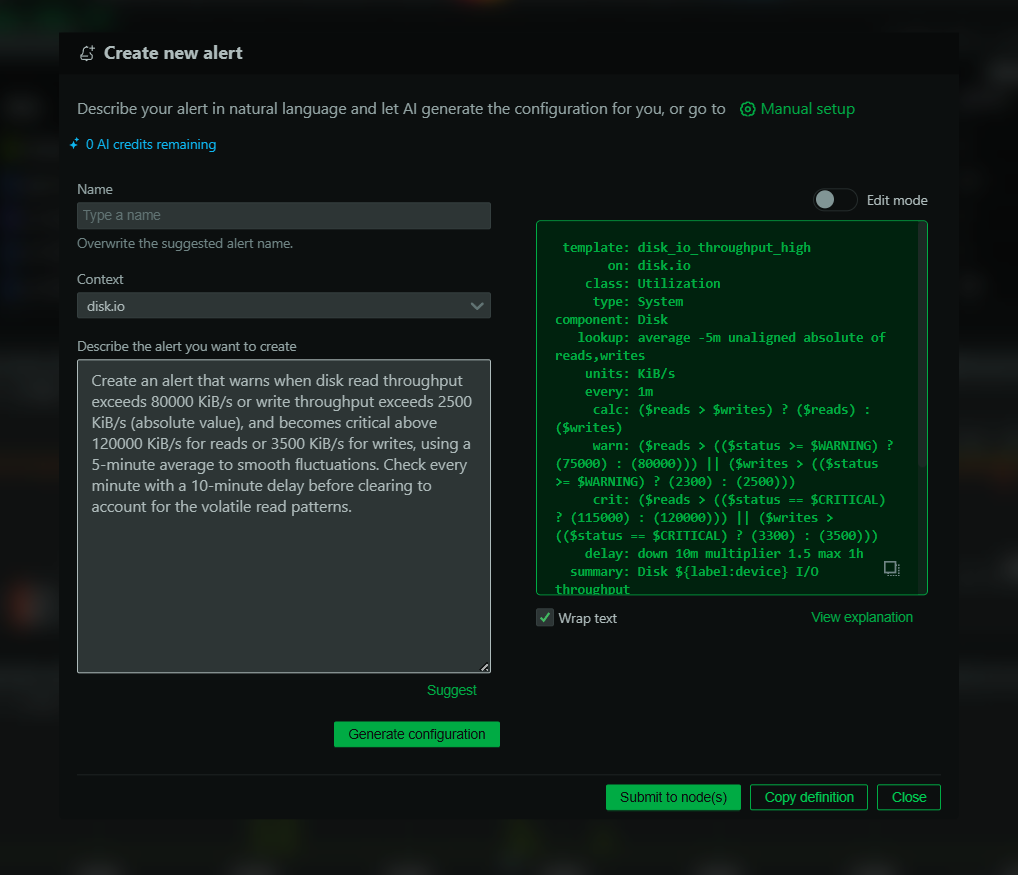You’ve built a powerful, real-time data pipeline with Apache Kafka, but suddenly, things grind to a halt. The dreaded consumer lag is exploding, alerts are firing, and your downstream applications are starved for data. This scenario is all too common for teams running Kafka at scale. Often, the culprit is a subtle interplay between consumer group rebalancing, partition assignment, and suboptimal consumer configurations. Understanding these mechanics is not just about fixing a problem; it’s about building resilient, high-throughput streaming systems from the ground up.
Tackling Kafka consumer lag requires a proactive approach. Instead of reacting to lag spikes, you need to monitor the right metrics, comprehend the rebalancing process, and fine-tune your consumers for peak performance. This guide will walk you through the complexities of consumer group coordination, explain why rebalances happen, and provide actionable strategies to optimize throughput and maintain stability in your Kafka ecosystem.
Understanding the Consumer Group Rebalance
At the heart of Kafka’s parallelism and fault tolerance is the consumer group. When multiple consumer instances subscribe to the same topics under a single group.id, Kafka distributes the topic partitions among them. This distribution ensures that each partition is consumed by exactly one consumer in the group, allowing for parallel processing. The process of assigning or re-assigning partitions to consumers is called a rebalance.
A rebalance is triggered by the Group Coordinator, a designated broker responsible for managing the state of a consumer group. A rebalance is initiated under several conditions:
- A new consumer joins the group.
- An existing consumer leaves the group (either gracefully by calling
unsubscribe()or ungracefully by crashing or timing out). - The topic metadata changes, such as when new partitions are added to a subscribed topic.
While rebalancing is a powerful feature for elasticity and fault tolerance, it has a significant side effect: it causes a “stop-the-world” pause for the entire consumer group. During a rebalance, consumers cannot fetch or process any messages. This pause is necessary to ensure partition assignments are consistent across all members before consumption resumes. If rebalances are frequent or take a long time, they become a primary source of consumer lag.
The Rebalance Protocol and its Impact
The rebalance process involves several steps coordinated between the consumers and the Group Coordinator:
- Trigger: An event (like a consumer joining or leaving) triggers the rebalance. The Group Coordinator revokes ownership of all partitions from all consumers in the group.
- Rejoin: All consumers must send a
JoinGrouprequest to the coordinator to rejoin the group. - Assignment: The first consumer to join is designated the group leader. The leader receives a list of all members and is responsible for running a
PartitionAssignorstrategy to decide which partitions go to which consumer. - Sync: The leader sends the assignment plan to the Group Coordinator. The coordinator then distributes the specific partition assignments to each respective consumer in a
SyncGroupresponse. - Resume: Consumers receive their new partition assignments and can resume fetching messages.
This entire process can be time-consuming. The longer it takes for all consumers to rejoin, for the leader to calculate assignments, and for everyone to sync up, the longer the consumption pause, and the more lag accumulates. Frequent, short rebalances can be just as damaging as infrequent, long ones.
Why Consumer Lag Explodes and How to Monitor It
Consumer lag is the difference between the latest offset produced to a partition and the last offset committed by a consumer for that partition. A small, stable lag is normal, representing the in-flight messages being processed. However, a “lag explosion” refers to a rapid, uncontrolled increase in this offset difference, indicating that consumers cannot keep up with producers.
Key Causes of Consumer Lag Spikes
- Frequent Rebalancing: As discussed, every rebalance pauses consumption. If consumers are unstable and frequently join/leave the group, the cumulative pause time can cause lag to build up rapidly.
- Slow Processing: The consumer application itself might be the bottleneck. If processing a single message takes too long, the consumer won’t call
poll()frequently enough, leading to lag. This can be due to slow database calls, complex computations, or waiting on external services. - Insufficient Throughput: The consumer may not be configured to fetch data fast enough from the brokers, even if its processing logic is fast. This is often a matter of tuning consumer fetch configurations.
- Partition Skew: Data may not be evenly distributed across partitions. If a few partitions receive a disproportionately high volume of messages, the consumers assigned to those partitions will struggle to keep up, creating lag on those specific partitions while others are fine.
- Broker or Network Issues: Problems on the broker side, like high disk I/O or network saturation, can slow down fetch responses, contributing to consumer lag.
Essential Metrics for Monitoring Consumer Lag
Proactively monitoring lag is crucial. Relying on end-user complaints is a recipe for disaster. You should monitor key JMX metrics provided by Kafka clients and brokers.
records-lag-max: This is the most critical metric. It shows the maximum lag in the number of records for any partition assigned to a consumer. An increasing value over time is a clear sign that the consumer group is falling behind.fetch-rate: The number of fetch requests per second. A low fetch rate might indicate that the consumer is spending too much time processing messages betweenpoll()calls.bytes-consumed-rate: The average number of bytes consumed per second. This helps you understand the consumer’s actual throughput.- Consumer Group Rebalance Metrics:
join-rate: The rate of consumers joining the group. A high join rate signals instability.sync-rate: The rate of consumers syncing their assignments. A high rate corresponds to frequent rebalances.rebalance-latency-avg/rebalance-latency-max: The average and maximum time spent in a rebalance. High values here point directly to prolonged consumption pauses.
Tools like Netdata can automatically collect these metrics, provide real-time dashboards, and set up alerts for anomalies like a sudden increase in records-lag-max or rebalance-latency-max, allowing you to detect and diagnose lag explosions before they impact your services.
Throughput Optimization and Rebalance Tuning
To prevent consumer lag, you need to minimize rebalance duration and maximize message consumption throughput. This is achieved by carefully tuning consumer configuration parameters. All the following parameters are set on the consumer client.
Stabilizing the Consumer Group
The first step is to ensure your consumer group is stable. Unnecessary rebalances are often caused by misconfigured timeouts.
session.timeout.ms: This property defines the maximum time a consumer can be out of contact with the Group Coordinator before being considered dead. If the consumer doesn’t send a heartbeat within this window, the coordinator will kick it out of the group, triggering a rebalance.heartbeat.interval.ms: This dictates how frequently the consumer sends a heartbeat to the coordinator. It must be lower thansession.timeout.ms, and it’s recommended to be no more than one-third of the session timeout.max.poll.interval.ms: This is a crucial setting that defines the maximum amount of time allowed between calls toconsumer.poll(). If your message processing takes longer than this value, the consumer will stop sending heartbeats, and the coordinator will assume it has failed, leading to a rebalance. If your processing logic is slow, you must increase this value.
Imagine your application takes, on average, 1 minute to process a batch of records. With the default max.poll.interval.ms of 5 minutes, you are safe. But if a particular batch requires complex processing and takes 6 minutes, the consumer will miss its deadline. The Group Coordinator will remove it, triggering a rebalance, pausing all other consumers, and causing lag to spike across the group. The fix is to increase max.poll.interval.ms to a value that safely accommodates your longest processing time.
Optimizing Consumer Throughput
Once your group is stable, you can focus on pulling data from Kafka as efficiently as possible. This involves tuning how the consumer fetches batches of records.
max.poll.records: This controls the maximum number of records returned in a single call topoll(). If your processing is fast, you can increase this to process more records per poll loop, improving throughput.fetch.min.bytes: This sets the minimum amount of data the broker should return for a fetch request. If the broker has fewer than this many bytes, it will wait up tofetch.max.wait.msfor more data to arrive. Setting this to a higher value reduces the number of requests to the broker, which can lower broker CPU usage and improve overall throughput at the cost of slightly higher latency.fetch.max.bytes: This is the maximum amount of data the server will return for a fetch request. It’s an upper bound on the size of the data received in one go.fetch.max.wait.ms: The maximum time the server will block waiting forfetch.min.bytesof data to be available.
The goal is to make fewer, larger fetch requests. This is more efficient for both the consumer and the broker. You should increase fetch.min.bytes to encourage the broker to send fuller batches, adjust fetch.max.wait.ms to give the broker enough time to fill the larger request, and increase max.poll.records if your per-record processing is very fast.
Advanced Partition Assignment Strategies
The default partition.assignment.strategy is RangeAssignor followed by CooperativeStickyAssignor. While these work well, understanding the alternatives can help in specific scenarios.
- RangeAssignor: Assigns partitions on a per-topic basis. Can lead to imbalance if the number of consumers doesn’t evenly divide the number of partitions.
- RoundRobinAssignor: Assigns partitions one-by-one to consumers. Tends to create a more balanced assignment across all subscribed topics.
- StickyAssignor: Aims to be as balanced as possible while minimizing partition movement during a rebalance. When a rebalance happens, it tries to keep existing assignments intact, which can significantly reduce the impact on stateful consumers.
- CooperativeStickyAssignor: An improvement on the StickyAssignor that uses an incremental rebalancing protocol. Instead of a “stop-the-world” pause, consumers only give up the partitions they need to and can continue processing others, drastically reducing rebalance downtime. Using this strategy requires broker and client support (Kafka 2.4+).
If you are experiencing long rebalances, switching to the CooperativeStickyAssignor can be a game-changer.
Dealing with a Kafka consumer lag explosion can be stressful, but it’s a solvable problem. The key is to shift from a reactive to a proactive mindset. By continuously monitoring consumer lag and rebalance metrics, you can gain insight into your system’s behavior. From there, stabilizing your consumer group by tuning session timeouts and processing intervals provides the foundation for performance. Finally, optimizing throughput with careful adjustments to fetch sizes and batch parameters will ensure your consumers can handle the load. By mastering these concepts, you can build and maintain a robust, high-performance Kafka pipeline that reliably delivers data to the applications that depend on it.
Ready to get deep, real-time insights into your Kafka consumer performance? Try Netdata for free and start monitoring your entire infrastructure in minutes.









